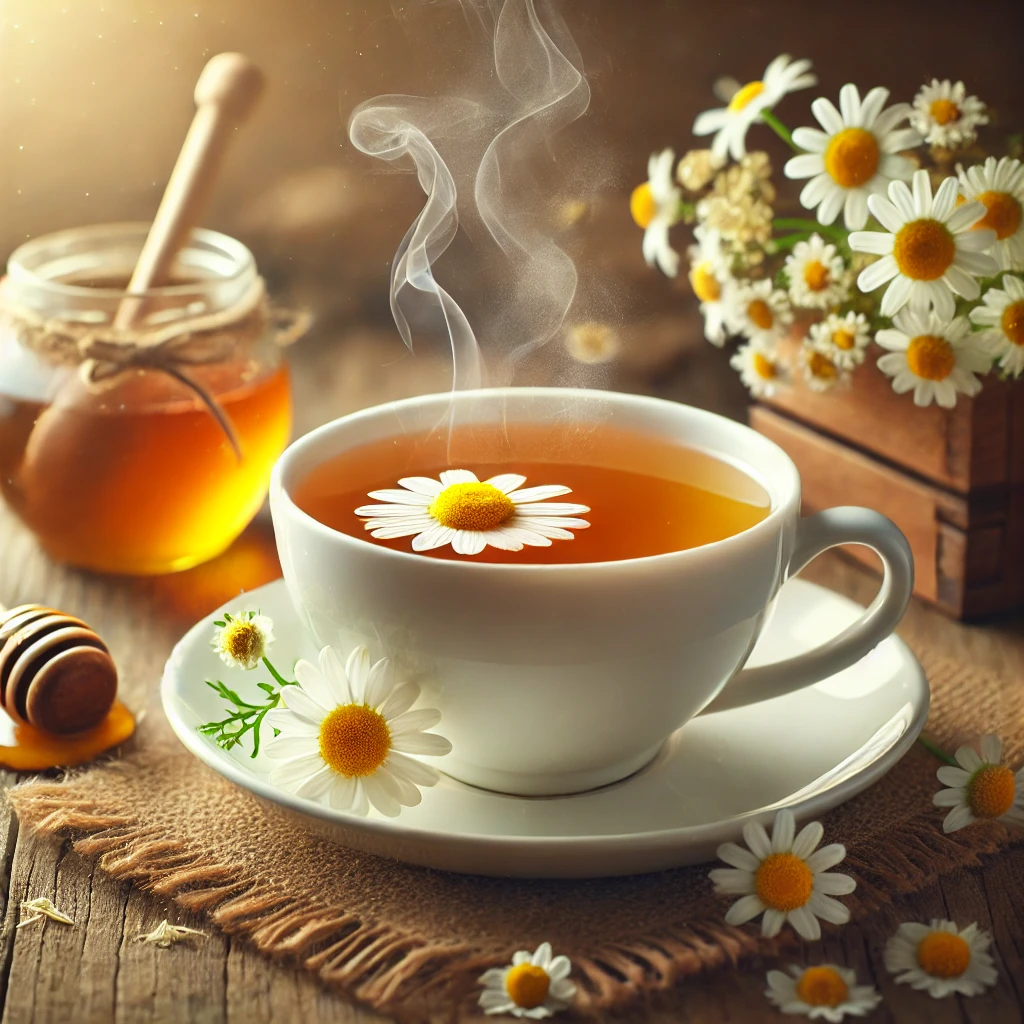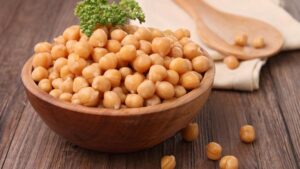The Benefits Of Chamomile Tea

The Historical Significance of Chamomile in Ancient Medicine
Chamomile has been used for thousands of years across different civilizations due to its calming, healing, and anti-inflammatory properties.
Chamomile tea is a popular herbal infusion known for its soothing properties and numerous health benefits.
Ancient Egypt: The Herb of the Sun God
The Egyptians highly revered chamomile, associating it with the sun god Ra due to its bright yellow center and healing powers.
It was used to treat fevers, promote relaxation, and embalm the dead.
Egyptian women also used chamomile as a beauty treatment to lighten their hair.
Chamomile flowers were even depicted in Egyptian hieroglyphs, showcasing their significance in medicine and rituals.
Here are some of its key advantages:
1. Promotes Better Sleep and Relaxation
Chamomile contains apigenin, an antioxidant that binds to certain receptors in the brain, promoting sleepiness and reducing insomnia.
2. Reduces Stress and Anxiety
The calming effects of chamomile tea can help alleviate stress and anxiety by promoting relaxation and reducing cortisol levels.
3. Supports Digestive Health
Chamomile tea has anti-inflammatory and antispasmodic properties that help soothe digestive issues like bloating, gas, and indigestion.
4. Boosts Immune System
Rich in antioxidants, chamomile tea can help strengthen the immune system, making the body more resistant to infections.
5. Alleviates Menstrual Pain
Chamomile tea’s muscle-relaxing effects can help ease menstrual cramps and discomfort.
6. Supports Heart Health
Flavonoids in chamomile may help lower blood pressure and cholesterol levels, reducing the risk of heart disease.
7. Improves Skin Health
Chamomile’s anti-inflammatory and antibacterial properties can help soothe skin irritations, acne, and eczema.
8. Aids in Blood Sugar Control
Studies suggest that chamomile tea may help regulate blood sugar levels, making it beneficial for people with diabetes.
9. Has Anti-Inflammatory Properties
Chamomile tea can help reduce inflammation, which is linked to chronic conditions like arthritis and heart disease.
10. Supports Oral Health
Its antibacterial properties can help prevent gum disease and soothe mouth sores.
Chamomile tea recipes and cultural significance.
Simple Chamomile Tea Recipes
Classic Chamomile Tea
Ingredients:
- 1 tbsp dried chamomile flowers (or 1 chamomile tea bag)
- 1 cup hot water
- Honey or lemon (optional)
Instructions:
- Boil water and pour it over chamomile flowers or a tea bag.
- Let it steep for 5-7 minutes.
- Strain the flowers (if using loose chamomile).
- Add honey or lemon if desired. Enjoy!
Chamomile Honey Latte
Ingredients:
- 1 tbsp dried chamomile flowers
- 1 cup hot milk (or dairy-free alternative)
- 1 tsp honey
- ½ tsp vanilla extract
Instructions:
- Steep chamomile flowers in ½ cup hot water for 5 minutes.
- Warm the milk and froth it if desired.
- Strain the chamomile tea and mix it with warm milk.
- Stir in honey and vanilla for extra flavor.
Chamomile Iced Tea with Citrus
Ingredients:
- 2 tbsp dried chamomile flowers
- 2 cups hot water
- 1 tbsp honey
- Ice cubes
- Lemon or orange slices
Instructions:
- Steep chamomile flowers in hot water for 10 minutes.
- Strain and mix in honey.
- Let it cool, then pour over ice.
- Add citrus slices and enjoy!
Chamomile Tea in Different Cultures
Egypt – Chamomile was used in ancient Egypt for medicinal purposes, and Egyptians dedicated it to their sun god, Ra.
Germany – Chamomile is a key herb in German traditional medicine, often used for stomach issues and relaxation.
Greece & Rome – Both ancient Greeks and Romans used chamomile for its calming and healing properties.
China – While not as popular as green tea, chamomile is used in Chinese herbal medicine for relaxation and reducing inflammation.




